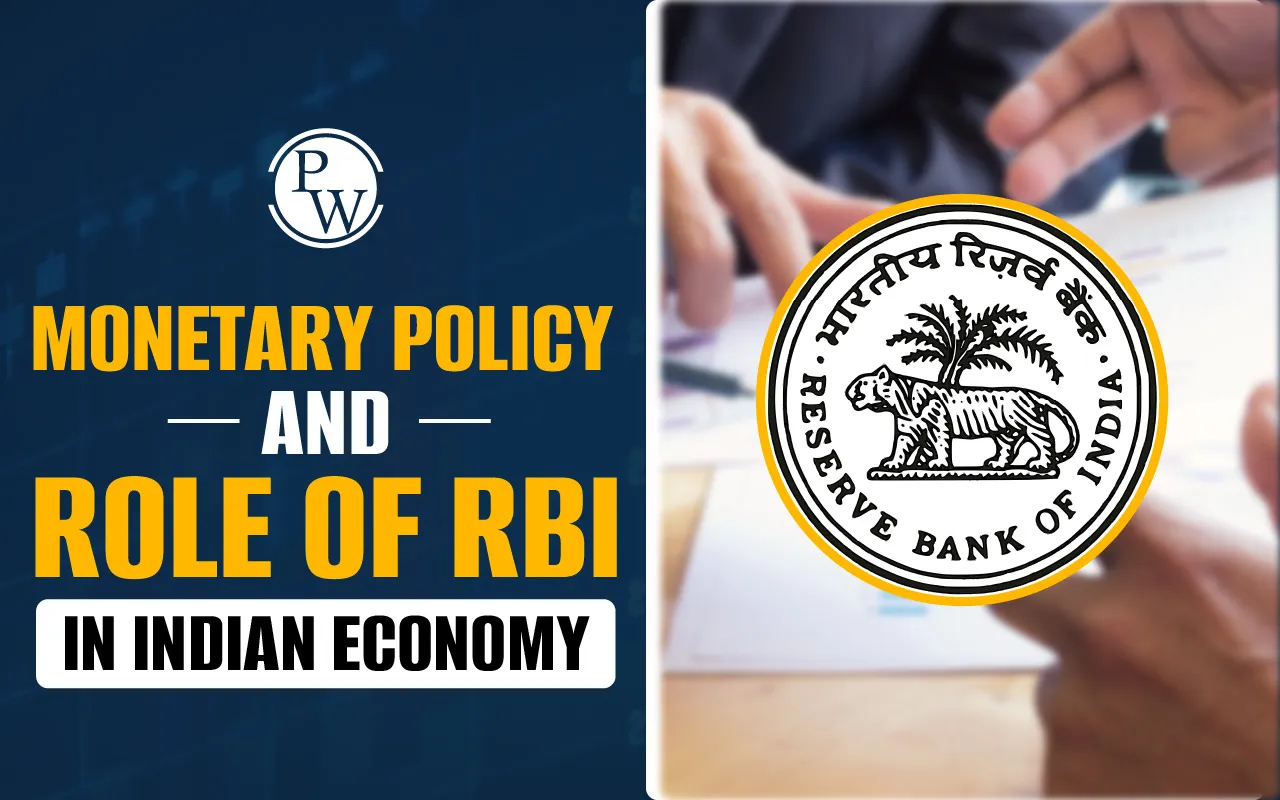
India's economic framework is deeply shaped by its financial policies and institutional mechanisms. Among the key pillars of this framework is the Monetary Policy, formulated and regulated by the Reserve Bank of India (RBI). The Monetary Policy and Role of RBI in Indian Economy are critical components that influence inflation rates, currency stability, credit availability, and overall financial growth. As the central bank, the RBI functions as the main authority in determining the direction of the nation's monetary strategies and ensuring stability within the banking and financial system.
Monetary Policy refers to the process by which a country's central bank controls the money supply, often targeting an inflation rate or interest rate to ensure economic stability and growth. In India, the RBI is entrusted with the task of formulating and executing the Monetary Policy. This policy serves as a tool for maintaining price stability, ensuring adequate flow of credit to productive sectors, and achieving sustainable economic development.
Expansionary Monetary Policy: Implemented when the RBI wants to stimulate the economy by increasing the money supply and lowering interest rates.
Contractionary Monetary Policy: Used to control inflation by reducing the money supply and increasing interest rates.
The balance between these policies is essential for regulating demand, controlling inflation, and encouraging investment.
Also Check: Circular Flow of Income in a Two-Sector Economy
The core objectives of India’s Monetary Policy are:
Price Stability: To keep inflation within an acceptable range to ensure the purchasing power of the rupee remains stable.
Economic Growth: To create a conducive environment for business and industrial growth.
Exchange Rate Stability: To prevent excessive volatility in the foreign exchange market.
Credit Control: To regulate the amount of credit available in the system for economic activities.
These objectives highlight the importance of the Monetary Policy and Role of RBI in Indian Economy, showcasing how carefully curated financial strategies can help balance growth with stability.
To fulfill the objectives of the Monetary Policy, the RBI employs various tools. These tools are mainly classified into two categories quantitative and qualitative:
These instruments signify the critical Role of RBI in Indian Economy as it tries to maintain liquidity while ensuring that inflation and interest rates remain under control.
The Reserve Bank of India performs a wide range of functions beyond just implementing the Monetary Policy. The Role of RBI in Indian Economy extends to almost every part of the financial system, including regulation, supervision, issuance of currency, and maintaining financial stability.
Monetary Authority: Formulates, implements, and monitors the Monetary Policy to ensure price stability.
Issuer of Currency: Has the sole right to issue currency notes in India, thus ensuring the public’s confidence in the currency system.
Regulator of the Financial System: Ensures the safety and soundness of the banking system through regulation and supervision.
Custodian of Foreign Exchange: Manages the Foreign Exchange Management Act (FEMA) to facilitate external trade and payments.
Developmental Role: Promotes financial inclusion, rural banking, and digital payment systems.
These responsibilities illustrate the dynamic Role of RBI in Indian Economy and its ability to influence both micro and macroeconomic outcomes.
The coordinated action of the Monetary Policy and Role of RBI in Indian Economy has several far-reaching impacts:
Controlling Inflation: Through tools like repo rate and CRR, the RBI manages money supply and inflation.
Enhancing Investment: Lower interest rates encourage investments in industry and infrastructure.
Stabilizing Currency: RBI interventions in forex markets help maintain exchange rate stability.
Banking System Efficiency: RBI guidelines improve transparency, risk management, and capital adequacy in banks.
Crisis Management: During financial crises, the RBI steps in with liquidity support and policy adjustments.
Through these measures, the Monetary Policy and Role of RBI in Indian Economy play a strategic role in strengthening the country’s financial resilience and economic growth.
The Monetary Policy Committee (MPC), which comprises six members including the RBI Governor, meets every two months to review and adjust the policy as needed. In recent times, policy decisions have taken into account global factors like oil prices, currency fluctuations, and geopolitical tensions, as well as domestic challenges such as inflation and fiscal deficit. The RBI has increasingly adopted a data-driven approach to decision-making, which reflects its evolving and adaptive role in the economy.
The Monetary Policy and Role of RBI in Indian Economy form the cornerstone of India’s financial management system. By setting interest rates, regulating the money supply, and ensuring financial stability, the RBI actively influences the economic environment. It plays a proactive role in addressing economic challenges, promoting growth, and maintaining inflation within target levels. As India continues to grow, the collaborative alignment of monetary strategies and institutional expertise will remain essential to achieving long-term stability and prosperity.
Join PW Commerce Online Course and unlock your potential with quality education and dedicated learning support.
